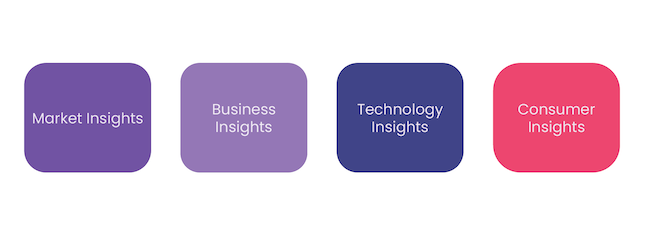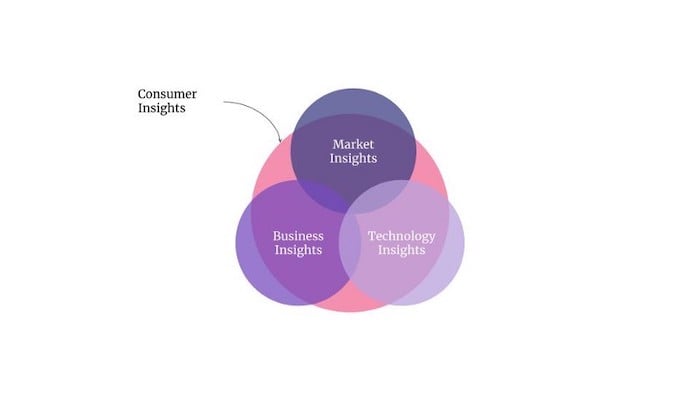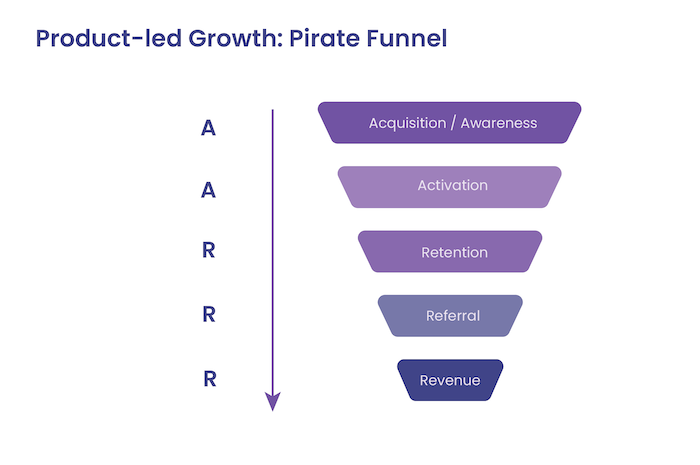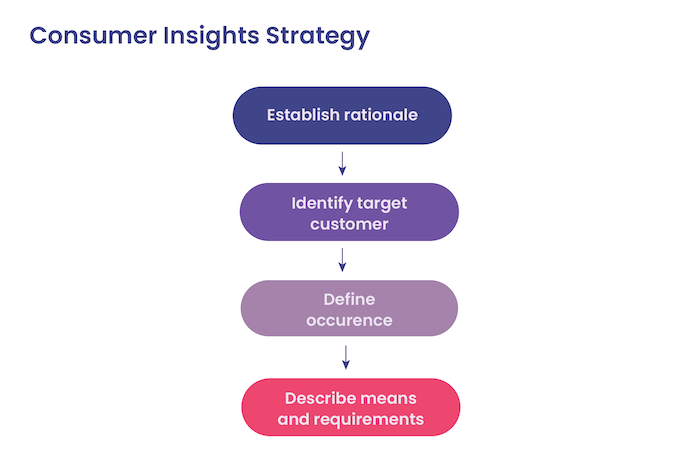Meet Milla, the co-founder and chief product officer (CPO) of a platform that aims to revolutionize the restaurant reservation experience.
Based on her competitive analysis, Milla has an idea for a new feature that she hopes will turn existing customers into advocates for the product. She’s counting on this infusion of new users to help her reach her year-on-year growth objective.
The development and release process, though long and tedious, goes flawlessly. But after a month, all of her product metrics are moving in the wrong direction.
Milla wonders what she could’ve done differently. Is there still a way to make the feature a success?
If you’ve been in Milla’s shoes, read on for a comprehensive guide to the wonderful world of consumer insights.
Table of contents
- What are consumer insights?
- Where do consumer insights fit into product management?
- What are the benefits of consumer insights?
- How consumer insights enable product growth
- How to create a consumer insights strategy
- Consumer insights in action: 3 shining examples
- Conclusion/key takeaways
What are consumer insights?
The example described above is a typical one many startups and companies can relate to: the task of understanding and validating the consumers’ needs and wants, which are essential to the success of a future-proof feature, is often overlooked.
The success of your product depends on how well it can fulfill customer needs through an outstanding customer experience. That is why it is critical for you as a product manager to have a customer-driven mindset.
You need to understand, interpret, and draw conclusions that can further improve your product from customer data, behaviors, and feedback, also known as consumer or customer insights.
Where do consumer insights fit into product management?
As a product manager, you are continuously looking for what is needed to make the product what the customer wants.
Insights are key to achieving this. There are four insights categories to assess the desirability, viability, and feasibility of those customer needs:

Market insights
Market insights are acquired through market research. They help you understand the market potential and how to approach the market to gain a competitive advantage.
Market insights aim to answer questions such as:
- How big is the potential market?
- Who are the current players in the market?
- How are they performing?
- How easy is it to enter the market?
- What are the trends in the market?
Business insights
Although this step involves evaluating against key competitors, business insights are more internally focused. They aim to set out the objectives the company is pursuing, how well it is able to do so, and how it can further improve.
Business insights aim to answer questions such as:
- What is the company’s vision, mission, and key objectives?
- What are the main costs drivers?
- What are the main profit drivers?
- Which customer segments are being served?
- How well is the company performing in the market?
Technology insights
Technology insights are also internally focused and provide information about the company’s tech stacks and approach to delivery.
Technology insights aim to answer questions such as:
- Which tech stack is used?
- How is the roadmap managed?
- How are experimentation and discovery managed?
- How are continuous improvement and innovation enabled?
- Which delivery methodologies are used?
- How effective are the delivery and product life cycle?
Consumer insights
Consumer insights enable you to make consumer-driven decisions. They help you understand the needs and behavior of consumers.
Consumer insights aim to answer questions such as:
- Who are the consumers, and what are their characteristics?
- What are their needs?
- What motivates them to take action?
- Which channels do they use?

As you might have noticed, consumer insights play an important role in all insights categories. It shows the importance of nailing your consumer strategy.
But before going into that, let me first show you why you need to get into the consumer insights game now.
What are the benefits of consumer insights?
Now, it might sound like a huge investment to continuously engage with and collect consumer insights. So what are the benefits of collecting, analyzing, and evaluating consumer insights?
In short, consumer insights help solidify your customer-led growth strategy and optimize your end-to-end customer experience.
Key benefits of gathering consumer insights include:
- Decreasing the customer acquisition costs
- Increase the targeting of and sales to new customers
- Reducing customer churn
- Increase the upsell to existing customers
- Increasing customer loyalty
- Improve the marketing return on investment
All of these benefits improve the customer’s lifetime value (CLV), revenue, and profits. This is why consumer-driven decisions and a follow-the-customer mindset are critical to any company’s success.
How consumer insights enable product growth
To understand the true power of consumer insights, we need to look at where in the product management process consumer insights are used.
Let’s do this by looking at the Pirate Funnel, developed by Dave McClure. The pirate funnel spells out AARRR. The Pirate Funnel is so named because its components when mnemonized, spell out AARRR, which, when pronounced phonetically, sounds like a pirate exclaiming (e.g., “Aarrr, matey!”).

AARRR stands for awareness/acquisition, activation, retention, revenue, and referral. It aims to help generate business growth by tracking user behaviors, gathering user data, and analyzing and evaluating the data to try to influence the behavior throughout all the steps:
Let’s explore each stage of the pirate funnel in more detail:
Acquisition/awareness
Data insights, the first step of the funnel, evolve around understanding how consumers discover and evaluate products. Which criteria do they use to look for a product, and how do they assess several products? Many of these insights you will capture when defining the persona and creating the customer journey maps.
Activation
Data insights in activation provide information about the actions consumers take in the product and how you can influence them to take the actions you want them to take.
Retention
Retention is about understanding why, how, and how often consumers are interacting with the product and specific features. It is also about understanding why consumers churn and what it would take to prevent them from churning.
Revenue
Why are your consumers willing to pay for your product, what features are they willing to pay for when made available, and what usability improvements would they need to not churn? Revenue from a consumer insights point of view is all about increasing the lifetime consumer value.
Referral
Do consumers like the product so much that they proactively tell others about it? What would it take for them to become active advocates/champions of the products?
The above requires you to collect tons of consumer data through sales, usage events tracking, consumer surveys, interviews, focus groups, and more. You not only look inward to your own product but also at what consumers say about your key competitors in these areas.
If you haven’t figured out who your competitors are conduct a competitive analysis and use it as a starting point.
How to create a consumer insights strategy
You want to make conducting consumer research a consistent and repeatable process to ensure it provides you with all the insights needed to run a successful product. What you need for that is a consumer insights strategy.
The framework for creating a consumer insights strategy consists of four steps:
- Establish the rationale
- Identify who your customer is
- Establish when you want to acquire insights
- Describe what insights you want to collect

Establish the rationale
Start by describing what you aim to achieve with your product and how consumer insights can help you achieve this objective. In other words, why do you require consumer insights?
Having a clear understanding allows you to determine the type of consumer insights required and how to accomplish the consumer insights strategy.
Identify who your customer is
Captain obvious strikes again (Marvel, are you reading this? It’s a free-of-charge multi-million dollar movie title idea. You are welcome!).
A great consumer insights strategy requires you to define who the strategy is aimed at. Keep in mind that you will most likely target multiple consumer segments. This is not limited to existing customer segments, but also includes potential customers.
Each of them have different needs and therefore require a different approach to acquire valuable insights from.
Establish when you want to acquire insights
Don’t just think about the “when” in the context of the timing of collecting consumer insights but also about the best format of acquiring the insights. Having said that, it doesn’t mean collecting consumer insights is a one-off. To truly understand your consumers and build a long-lasting relationship, consumer insights must be a continuous activity.
Describe what insights you want to collect
Describe what kind of data to collect, and how. In this part also think about how the data quality will be ensured and what could prevent you from collecting the data.
Consumer insights in action: 3 shining examples
I hope to inspire you by describing three of my personal favorite examples of companies that managed to nail the consumer insights effort:
Nike
Nike, in Greek mythology, is the goddess personifying victory in any field—and hats off to how Nike honors and lives up to this personification! Nike has always put the customer at the center and is doing this outstandingly through their resonating, engaging storytelling ways of branding.
The company also understands that to increase customer loyalty it needs to understand the customer which means acquiring tons of data about them. Utilizing its SNKRS app, Nike app, Nike training club, and Nike Run club apps, Nike manages to consistently increase its direct sales. The data gathered is used to provide unique and personalized offerings, rewards, and loyalty programs.
Zalando
Zalando, an online retailer (e-commerce platform), is an interesting example from another perspective. The company has a very ambitious 2025 growth target and is well on track to realizing this. What’s driving this meteoric growth?
Zalando captures tons of consumer insights and offers a mix of advertising and analytics services through its Zalando Marketing Services. They provide business clients insights across 17 European markets, helping them to optimize their decision-making abilities.
Lego
If you have seen the Lego House documentary, Home of the Brick, you know that Lego is high on innovation and creativity.
Lego’s marketing strategy contributes to this phenomenon. Being it through strong partnerships with the education sector, engaging social media efforts, interacting with online communities aimed at more adult consumers, or through its TV program, Lego Masters.
Lego collects information to learn from and influence each persona in its ever-growing consumer base.
Conclusion/key takeaways
Consumer insights are key to truly understanding who your customers are, what they do, and what their needs and behaviors are. They are part of a broader set of insights that are gathered in product management to assess desirability, viability, and feasibility. Consumer insights support you in developing and improving your product, making it more effective and, as a result, increasing product growth and sales.
The post What are consumer insights and how to use them (with examples) appeared first on LogRocket Blog.
from LogRocket Blog https://ift.tt/a5OwxpV
Gain $200 in a week
via Read more



